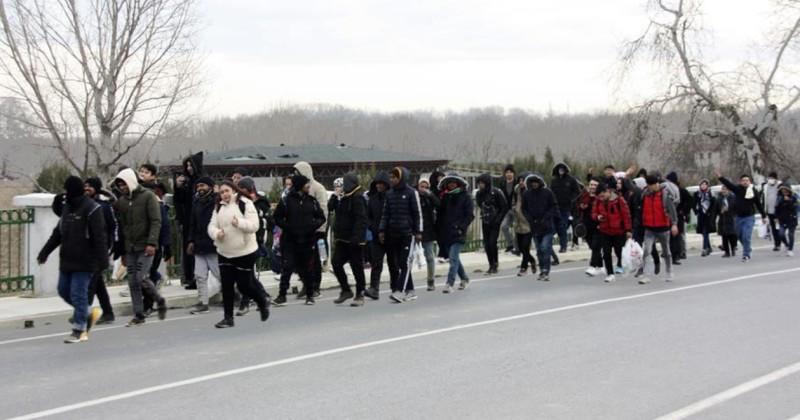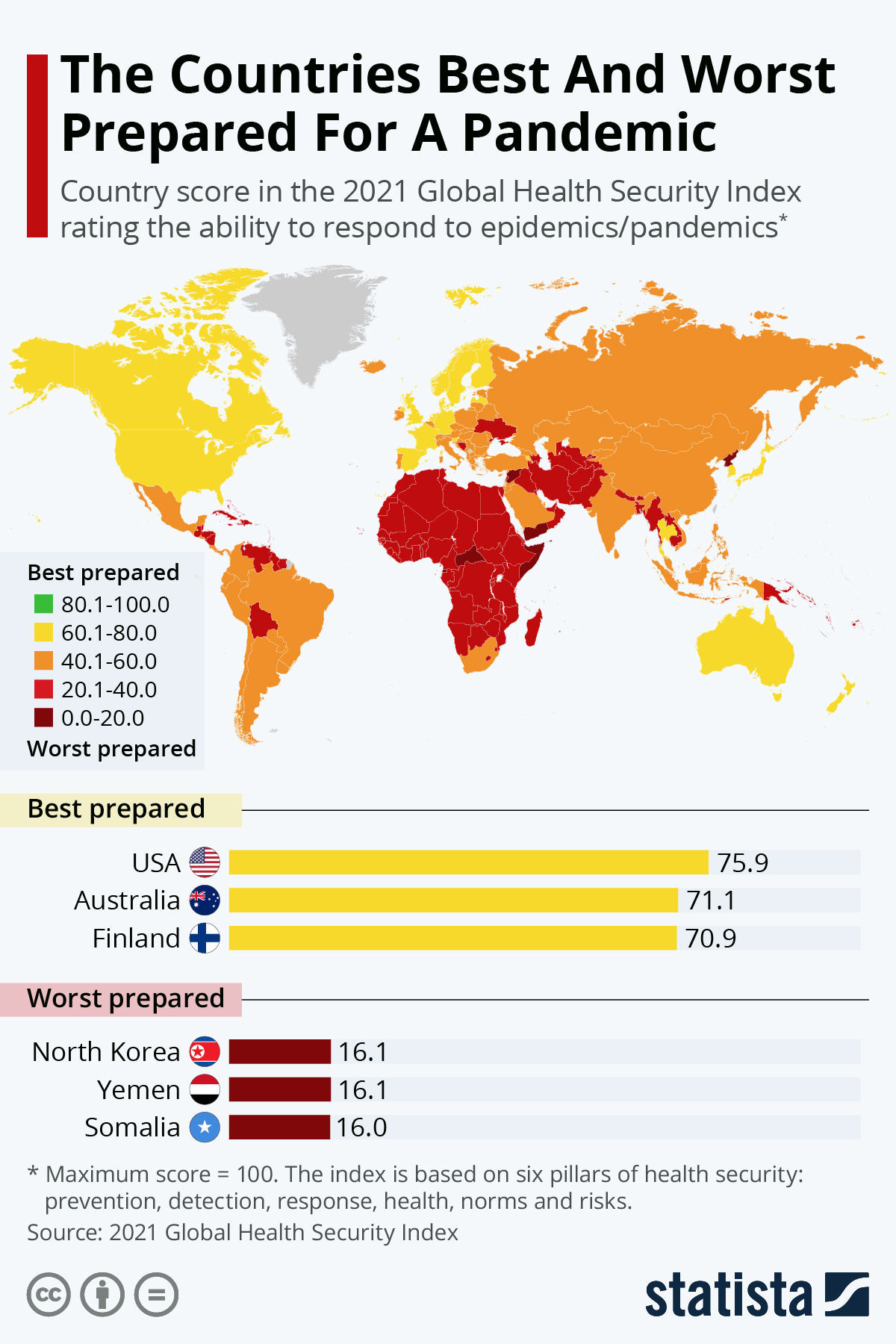In late 2006, a public defender went before a Napa County judge to argue for his client’s freedom. Rex McCurdy, a 49-year-old man, had been detained for seven years at Atascadero State Hospital under a 1995 California law authorizing “civil commitment” of people who have been convicted of sex offenses, a practice that keeps them confined long after they have completed their sentences.
In 1983, McCurdy had pleaded guilty to a rape, for which he served two years in state prison. In 1990, he was convicted of a burglary and served another six years. In 1998, McCurdy says he was brought in on a parole violation for living too close to a school, contrary to his conditions of release. Prosecutors used that violation and the two prior convictions to get McCurdy classified as a “sexually violent predator” (SVP), he says. That designation let them civilly commit him to Atascadero, much the way people with mental health issues can be locked up when they are deemed a threat to themselves or others.
Seven years after McCurdy was committed, his lawyer, Jim McEntee, was trying to persuade a judge that his client was a low risk to reoffend. If he failed, McCurdy would be confined at the hospital indefinitely. Fortunately, the lawyer had heard of evidence that might tip the scales: a study done at Atascadero itself that could help his client.
McEntee called as a witness Jesus Padilla, one of Atascadero’s psychologists. Padilla was four years into a study of ex-offenders classified as SVPs who had been released on technical grounds. Padilla had tracked them to find out their recidivism rates, which he presumed would be high.
What he discovered would undermine the basic premise of civilly committing people with sex crime records. In his sworn testimony before the judge and an October 10, 2006, memo, Padilla explained that of the 93 ex-offenders he and a colleague had tracked, just six had been rearrested for an alleged sexual crime after about five years in the community. That amounts to an astonishingly low rearrest rate of 6.5 percent. By comparison, a 2018 study by the federal Bureau of Justice Statistics found that 49 percent of all state prisoners were arrested again for the same type of offense within five years of their release.
The recidivism rate that Padilla found for SVPs did not square with the 1995 law that created the program, which had called the people it targeted a “small but extremely dangerous [group of] sexually violent predators.” In short, the study called into question the legitimacy of the entire $270-million-a-year civil commitment program.
Shortly after his testimony, Padilla’s study was abruptly terminated. His records were confiscated, his hard copies were shredded, and he was forbidden to talk about his work. At first he pushed back and even tried to continue on his own. But as he explained in 2009, “It’s too hard to fight the system, you know.” In 2013, Padilla died of stomach cancer, his research unfinished. The whole incident might have been forgotten, if not for the work of law professors Tamara Rice Lave and Franklin Zimring, who excavated Padilla’s work in a 2018 American Criminal Law Review article and brought to light the ways in which the state tried to ensure that knowledge of it would die with him.
California’s civil commitment program is the biggest in the country, holding 15 percent of those detained nationwide—so a great deal rides on understanding whether it is actually achieving its goals. Yet for decades it has operated under the cover of unexamined assumptions, and the authorities apparently prefer it that way.
What Is a ‘Sexually Violent Predator’?
The Constitution’s Fifth and 14th amendments bar punishing someone twice for the same crime. A 1997 Supreme Court decision gets around that prohibition by permitting states to confine certain sex offenders not for their old crimes but for those they might commit.
In Kansas v. Hendricks, the Court created special rules for people with sex offense records who suffer from a “mental abnormality” or “mental illness” that makes it “difficult, if not impossible,” for them to control their behavior. The decision framed civil commitment not as punishment but as treatment. The justices took at face value the core assumption in the preamble to Kansas’ civil commitment law: that this group’s likelihood of committing new offenses is exceptionally high.
Today, 21 states and the federal government have civil commitment laws for people who have been convicted of sex crimes. Among them, they hold about 6,000 “sexually violent predators” in indefinite detention. California alone holds about 900. To qualify as an SVP under California’s law, a person must have committed at least one crime of sexual violence, and the state has to prove the offender has a diagnosed mental disorder that makes it “likely” he will reoffend.
The classification process begins six months before an inmate is scheduled to be released from prison. The California Department of Corrections screens inmates’ records and refers those who might qualify as sexually violent predators to the Department of State Hospitals (DSH) for evaluation. If two evaluators concur that an inmate meets the SVP criteria, the DSH refers the case to a district attorney, the D.A. brings the case to court for a civil commitment trial, and a jury decides whether the person meets the law’s criteria.
While the process may sound clear-cut, it is actually a dragnet that catches all manner of ex-offenders. The definition of a mental disorder that makes a person likely to reoffend is designed to include the broadest possible range of conditions. A 1998 American Psychiatric Association report concluded that “sexual predator commitment laws represent a serious assault on the integrity of psychiatry, particularly with regard to defining mental illness and the clinical conditions for compulsory treatment.”
A rich vein of psychiatric literature has documented the ambiguities of diagnosing mental illness and predicting dangerousness when it comes to forcing people into institutions. A 1998 Massachusetts study, for example, found that mental hospitals involuntarily detained patients with insurance 40 percent to 100 percent longer than those without. “Over thirty years of commentary, judicial opinion, and scientific review argue that predictions of danger lack scientific rigor,” University of Georgia law professor Alexander Scherr noted in a 2003 Hastings Law Journal article. “Scientific studies indicate that some predictions do little better than chance or lay speculation, and even the best predictions leave substantial room for error about individual cases. The sharpest critique finds that mental health professionals perform no better than chance at predicting violence, and perhaps perform even worse.”
Civil commitment of sex offenders fares no better. Recent studies of people referred for civil commitment and released or never committed for technical reasons found reoffense rates ranging from about 3 to 11 percent. A 2013 review that Florida commissioned of its civil commitment program concluded that “for those deemed to be so dangerous that they may be committed indefinitely—and cared for at great expense to the state—[the] false positive rate appears high.” While defending his state’s SVP commitment program in 2015, Mark Dayton, then the governor of Minnesota, conceded that “it’s really impossible to predict whether or not [sex offenders] are at risk to reoffend.”
Ultimately, the determination about whether an individual is likely to reoffend is made by a jury, not a clinician. That lowers the bar dramatically: In one survey of jurors who had served in Texas civil commitment trials, nearly 54 percent defined a 1 percent chance of reoffending as “likely.” That rate is actually lower than the likelihood that an offender with no sex crime convictions will commit such a crime, which ranges from 1 percent to 3 percent in studies with follow-up periods ranging from three to four and a half years.
Cases like McCurdy’s, in which a decades-old offense is used to argue that someone is still dangerous, are not uncommon in California, according to San Bernardino County public defender Jeff Lowry, who has spent 19 years representing SVPs. A person with a sex offense from 10 or more years ago might be rearrested on a nonsexual charge, Lowry said in a 2013 presentation—it might even be something like a probation violation for drinking alcohol. The person then gets referred through the system as a possible SVP. When the decision comes before a jury, the phrase sexually violent predator—a legal term, not a clinical one—puts the defendant in a big hole out of the gate. When it’s first used, Lowry said in the presentation, “you can feel the atmosphere in the entire courtroom change.”
That’s why, Lowry tells me, he always introduces a motion to have the defendant referred to at trial as a “6600”—referring to the relevant portion of the law—instead of a “sexually violent predator.” The maneuver has worked only once, however. “Every judge says, ‘The legislature chose to use that term, so that’s the term that we’re going to use,'” Lowry says.
Defendants don’t stand much chance. There does not appear to be any research on how often the prosecution wins in civil commitment hearings with juries, but in state cases Lowry estimates the rate is about 90 percent. At the federal level, he says, it’s closer to 45 percent because judges rather than juries make the decision.
Padilla’s Odyssey
Under Kansas v. Hendricks, once people are locked up, the state has to offer them treatment. In theory, this offers a chance of release. In practice, some states almost never release SVPs. In 2002, Padilla had launched an effort to evaluate Atascadero’s treatment program and figure out whether it was actually reducing recidivism among those treated and then let out.
Padilla wasn’t looking to undermine the program. Quite the opposite, according to several people who knew him. In civil commitment hearings, he was “primarily if not exclusively an expert witness for prosecutors,” says Brian Abbott, a forensic psychologist in San Jose who often serves as a defense expert witness in sex offense cases. Marian Gaston, a former public defender who is now a California Superior Court judge, says by email that Padilla was “a big advocate of a particular diagnosis for rapists that I thought was specious, but he was very smart and believed in the work he was doing.” He was “a worthy adversary, I guess you could say.”
Some ex-offenders take a dimmer view. Mike St. Martin, civilly committed since 2002, says Padilla was strongly biased in favor of keeping people locked up. McCurdy claims that in his own commitment trial, several state evaluators concluded he was a low risk and should be released. He says Padilla, who was also on the evaluation team, was the only holdout.
According to Lave and Zimring’s masterful reconstruction, Padilla started working with an Atascadero social worker named Kabe Russell on what was planned as a 15-year study. At the time, California’s civil commitment program was the only one in the country to limit SVP commitments to two years; all other states with civil commitment allowed indefinite confinement. So every two years, the state had to prove to a judge that the person was still dangerous. California had consequently been forced by the courts to let out a trickle of detainees. (Voters have since enacted a ballot measure that allows indefinite confinement.)
By comparing the reoffense rate of Atascadero detainees who had been released after receiving treatment with the rate of those who were released without treatment, Padilla and Russell could test whether the hospital’s treatment program was working. “This is what any good program does,” Padilla would say at a 2011 hearing. “You say, ‘Well, we are treating sex offenders. How good is our program?'” Padilla and Russell planned to report their results every five years.
They expected—possibly hoped—to find high reoffense rates for the group released without treatment. “I’m hopeful that this data will confirm the importance of providing supervision and treatment for this high-risk group of patients,” Russell wrote to a program supervisor in 2004. Padilla later said he had expected the recidivism rates to be in the range of 37 percent to 38 percent over five years, consistent with predictions from a risk assessment done on the inmates.
That might be why Padilla and Russell went to extraordinary lengths to get solid data: They did not want to miss any new crimes committed by SVPs who were released. They could not get data from the state’s criminal history database without permission, so they went to Atascadero’s umbrella agency, the Department of Mental Health (DMH, a precursor to the DSH), which appointed someone to get them access. Melvin Hunter, the hospital’s executive director, approved the study design in 2004.
Padilla and Russell checked the state’s sex offender registry to see where the inmates who had been released were registered, then sent letters and made follow-up calls to the prosecutors in those counties, asking whether the ex-inmates had been rearrested. For anyone who had left the state, they checked FBI reports for rearrests.
The Investigators Get Investigated
Padilla and Russell were about two years into their data collection when McCurdy’s lawyer made his motion seeking their results. Padilla and the state resisted. “I said, ‘No, it’s privileged information,'” protected by the federal medical privacy law, Padilla remembered in 2009 testimony. But the judge ruled against him.
It turned out Padilla had good reason to fight the motion: After his resulting 2006 memo, the state turned on him. The director of the hospital’s SVP civil commitment program, George Bukowski, had OKed the study. Now he had been replaced by Jon de Morales, who accused Padilla and Russell of illegally accessing the state criminal history database, according to Padilla’s 2009 testimony.
Padilla showed de Morales he had authorization from the top to use the database. Nonetheless, in December 2006, Atascadero’s umbrella agency, the DMH, appointed an investigator to look into whether Padilla and Russell had illegally accessed the information. After a six-month ordeal, they were cleared. “My understanding was [Padilla] was pretty much taken aback by the negative reaction,” says Abbott, the forensic psychologist.
Worse was on the way. In June 2007, Hunter, the hospital’s chief executive, who had signed off on Padilla’s study, abruptly retired with no explanation. He was replaced by de Morales. Three days after taking over, de Morales sent Padilla a memo saying his study had been terminated and he was not authorized to use the data he had collected for publication, research, testimony, or any other purpose. Padilla was forced to turn over the electronic copy of his data and the boxes containing his backup information, all of which, he recounted in 2009, the department destroyed.
Padilla and Russell tried to keep going without the data they had collected. They reapplied to Atascadero for permission to continue. The hospital sent them to the DMH, which sent them to its own umbrella agency, the California Health and Human Services Agency, which sent them back to the DMH, which sent them back to Atascadero. Two years into the process, de Morales shut them down for good, telling the pair in a memo that they would not be given permission, because “neither [the hospital] nor DMH would permit ‘volunteers’ to conduct this research.”
Why did Padilla keep trying after the hospital shut him down? “I think what was driving him was that he wanted to know—he genuinely wanted to know—whether or not these people were dangerous,” Lave says. In his 2009 testimony, Padilla said he could have gone to then–Attorney General Jerry Brown and tried to convince him the state needed to look at the data. But he eventually gave up. “I got tired of pursuing it,” he said in his testimony, and now much of the information was “gone forever.”
De Morales retired in 2011. Contacted for comment, he responded by email. “Lave and Zimring did a good job with their analysis of predator commitment statutes,” he wrote. “However, the issue of access to [the state criminal database], Mel Hunter’s termination and whether or not the state/dept had a political or economic interest in quashing this ‘study’ is bogus.” He refused to comment further without approval from the state. When DSH was contacted to request that approval, spokesperson Ralph Montano said the agency was “unable to grant or deny a request for an interview with a former employee.”
Most other players in the story were unavailable for interviews. Hunter died in 2012 at 65. Russell, who owns a photography studio in the town of Atascadero, did not respond to requests for comment. Bukowski, the civil commitment director who approved the study, died in 2007 of leukemia. Two other people in Atascadero’s leadership who Padilla said knew of the study—Craig Nelson, who headed the treatment program, and Brenda Epperly, who headed the sex offender commitment program—did not respond to letters sent to their latest addresses.
By the time Atascadero shut down Padilla, it was too late to stop his data from being used in SVP cases. In a 2012 memo to defense lawyers, Abbott noted that under state standards the Padilla study was considered peer reviewed and therefore credible in court. At least two defense lawyers later called on Padilla to testify about his research while challenging their clients’ civil commitments. Gaston says Padilla’s testimony was part of the evidence that led a judge to find that one of her clients no longer met the SVP criteria.
Excavating Padilla’s Work
In 2011, when Lave and Zimring started what became a seven-year effort to discover what had happened to Padilla’s study, they found out what he had been up against. Lave is a University of Miami law professor, and one of her research interests is sex offense civil commitment law. Zimring, author of many books on criminal justice, directs the University of California, Berkeley, School of Law’s criminal justice studies program.
Lave and Zimring heard about Padilla and interviewed him by phone. Then they sent a freedom of information request to the DSH asking about Padilla’s data. They got back a letter from a staff lawyer saying the department was “unable to verify any study conducted by Jesus Padilla, PhD.” The DSH agreed to consider their request only after they sent the department a copy of Padilla’s original research proposal, which showed that the hospital’s top administrators had signed off on the study.
After months of wrangling, the agency turned over the data in mid-2012. But when Lave showed it to Padilla, he said the agency had tampered with the files, making the numbers unusable. Against de Morales’ orders, he said, he had kept his original data file. But he would not turn it over to Lave and Zimring, because the agency had ordered him not to, an instruction he abided by to the end.
Padilla did promise to use his original file to help Lave and Zimring restore the damaged data. But by then it was too late—he had been diagnosed with stomach cancer. When Lave met him in Atascadero in summer 2013, he was too weak to work with her. He died later that year. Lave and Zimring went to Russell for help, but he told them he did not remember the files well enough and would not look at them. All that’s left today of the study is Padilla’s October 2006 memorandum describing the results.
Even today, the DSH seems reluctant to acknowledge that Padilla’s study took place. Asked to respond to Lave and Zimring’s contention that the agency quashed it, Montano, the spokesman, said that “the study was allegedly conducted between 2004 and 2006” but that “the DSH was unable to validate the accuracy of the data that was recovered.” Asked whether the agency was denying the study’s existence (and, if so, to explain the data it provided to Lave and Zimring), Montano responded that the “DSH does not have records that indicate the Padilla study was completed.”
That, of course, is the point.
The Threat to Civil Commitment
Why deny the data? California’s program spends about $200,000 per inmate annually, according to 2016 data from the state’s sex offender management board—up almost 8 percent, adjusting for inflation, since 2005–06. The budget of the Coalinga State Hospital, which took over responsibility for SVPs from Atascadero in 2005, is $303 million for fiscal year 2019–20, up from $254 million four years earlier. Almost three-quarters of Coalinga’s patients are SVPs.
Low reoffense rates that undermine the program’s justification also might threaten a good chunk of the local economy. The hospital’s website notes that in the 2013–14 fiscal year, Coalinga bought some $15 million in goods and services from about 200 companies in the area.
Subsequent assessments of SVP civil commitment in other states comport with what Padilla found. A 2014 Minnesota study of 161 offenders referred for civil commitment but not actually committed found that just 6.5 percent were convicted of a new sex crime within four years of their release. In New Jersey, a 2013 study of 102 ex-offenders referred for SVP evaluation but ultimately not committed found that 10.5 percent were convicted of a new sex offense during an average follow-up period of six and a half years. A 2009 Texas study of 1,928 offenders screened for possible civil commitment as SVPs found that 3.2 percent were arrested for a new sex crime—a looser standard than reconviction—during follow-up periods that averaged nearly five years. A 2013 review of Florida’s civil commitment program cited state research involving 710 offenders who were recommended for civil commitment but released for various reasons between 1999 and 2013; 10 percent were subsequently charged with “a sexually motivated offense involving a victim” during followup periods of up to 14 years, depending on when offenders were released.
These data call into question the assumption at the heart of Hendricks v. Kansas. If SVP recidivism is not highly likely, as the Supreme Court assumed, the whole civil commitment scheme for getting around the Constitution’s ban on double jeopardy falls.
When California’s proposed SVP law was debated in 1995, the California Psychological Association, the Forensic Mental Health Association, and the California Psychiatric Association all came out against it, partly because of due process concerns. That last group argued in its legislative testimony that “mental health treatment facilities cannot be used as a gulag.”
One expert who has observed the growth of the state’s civil commitment program from the inside regrets what it has become. Janice Marques, a former DMH researcher whose work on recidivism is widely cited, is a founding member and former president of the Association for the Treatment of Sexual Abusers. Marques also was involved in the first legislative hearings on California’s 1995 SVP law. The civil commitment program “was never expected to be as large and as encompassing as it is,” she tells me. “The high recidivism rate just hasn’t panned out….It’s just so difficult once you set something like this up to get rid of it.”
California Assemblymember Sabrina Cervantes, a Democrat, introduced legislation signed by the governor last fall that reforms the SVP program by limiting continuances in civil commitment trials. But that response falls far short of eliminating the program altogether.
For their part, Lave and Zimring are calling on the U.S. Department of Justice to resurrect the Padilla study, which by now would have a long follow-up period. They would like to find out how many detainees released from the state’s civil commitment program without treatment have committed new crimes.
Without such a follow-up, California’s program will never be held to account. Even the rare legislators like Cervantes who pay attention to the program don’t seem inclined to touch the heart of the issue. In the absence of new data, inertia will compel the state to continue spending money on a program for which there appears to be little need.
One prisoner-cum-patient who has not been arrested for a new sex crime is Rex McCurdy. Padilla’s memo may have helped him: Following more legal wrangling, McCurdy says, he was released from Coalinga in 2009 after a judge ruled that he was no longer a danger. He moved to Spokane and opened an art studio, then returned home to Napa in 2019. Now 64, he lives on family property he co-owns.
The California sex offender registry still lists McCurdy as a “sexually violent predator.” That label, which the state applied to him a decade and a half after his sex crime, nearly condemned him to a lifetime of imprisonment.

from Latest – Reason.com https://ift.tt/387d1Pm
via IFTTT











